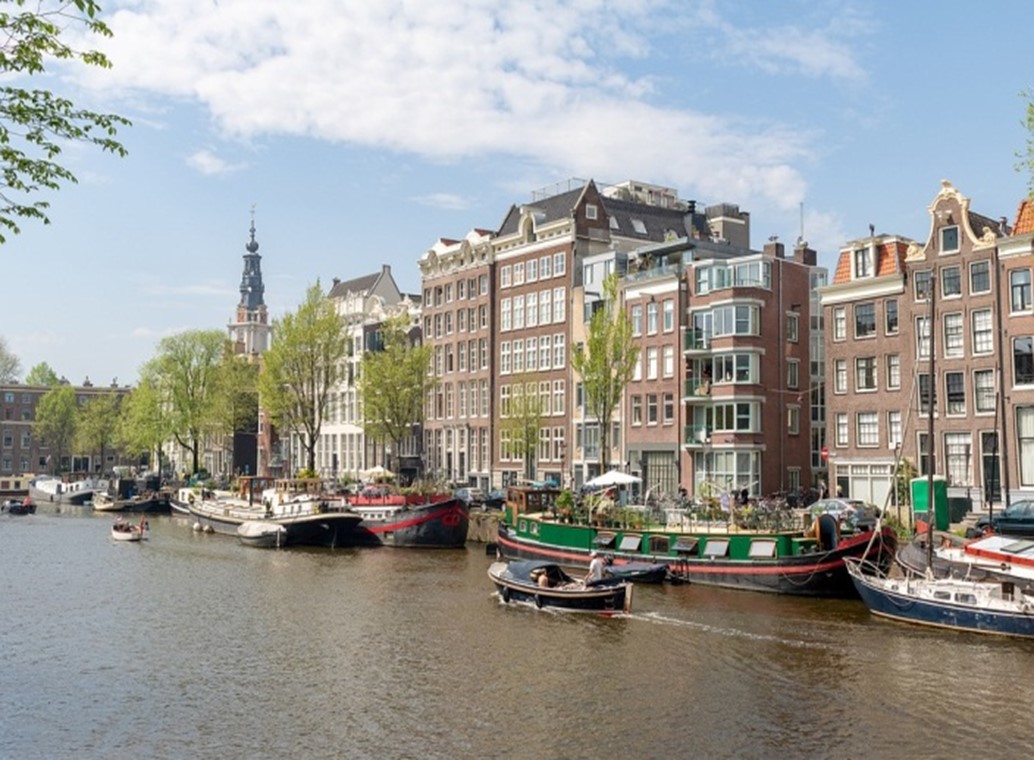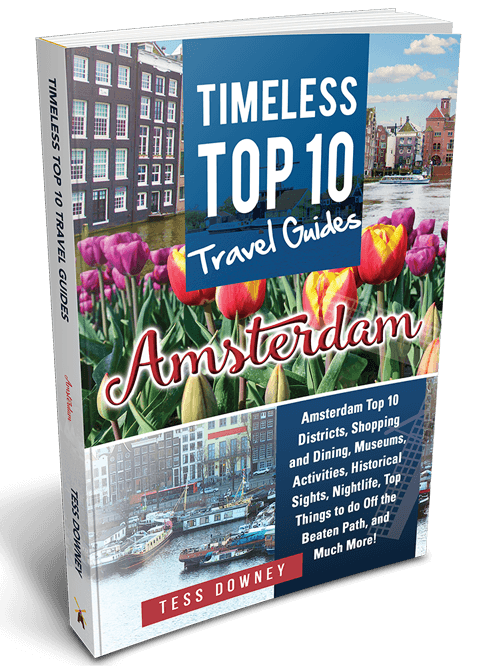CHAPTERS
Navigate to chapter
► Chapter One: Amsterdam Overview
► Chapter Two: Travel Essentials
► Chapter Three: Getting In and Around Amsterdam
► Chapter Four: Hotels and Accommodations
► Chapter Five: Dining in Amsterdam
► Chapter Six: Top 10 Tourist Spots in Amsterdam
► Chapter Seven: Shopping in Amsterdam
► Chapter Eight: Museums in Amsterdam
► Chapter Nine: Nightlife in Amsterdam
► Chapter Ten: Off – Beaten Path in Amsterdam
Chapter One: Amsterdam Overview

According to author Geert Mark, “Amsterdam is a city, but it is also a country by itself, a small nation inside a larger one.” Amsterdam is not just a city that’s unique from the rest of Netherlands; it’s also the most exceptional city in the whole world. If you compare it to other cities, you may conclude that it’s truly like no other. I know that seems to be a bold statement but I’m quite sure you’ll arrive at the same conclusion when you’ve been here, and have travelled to a lot of places.
The main reason lies with its people and the way the whole city is built. There are 175 nationalities that resides in the city, what could be more multi – cultural than that? The city has an appeal of a mashed up century old and modern – day metropolis but at the same time it’s not huge enough to be considered as a village that’s filled with many wonders to discover unlike other cities. It’s quite enchanting, romantic, and spontaneous. It truly has that notion of “live and let live.”
The Golden Age of Netherlands helped the city grow in various aspects especially in trade and architecture. Amsterdam is one of those picture – perfect cities that any millennial will die to snap a selfie from; one of its historic feature that’s quite prominent everywhere you look is the gabled houses. Gable houses are built along the world famous bridges and canals in the city. The gable types were used to mask the architectural idiosyncrasies through the sharp and pitched roofs. The city just wouldn’t be the same without such neighborhoods, it’s as important as the canals that made the city what it is today.
There are around 1,200 bridges in the city that connects everything and makes every destination very accessible. It’s actually included as one of the biggest must – see in Amsterdam. You can admire 15 bridges at the same time if you happen to stop between Reguliersgracht and Herengracht. Now tell me, how many cities in the world offers this kind of experience? Only in Amsterdam!
The Canal Ring which is locally known as ‘Grachtengordel’ as well as the 165 bridges and canals including gable houses are now part of the World Heritage Site (UNESCO).
Unlike other famous European cities, Amsterdam doesn’t have any squares or palaces that’s built during the ancient times, making it one of a kind. Majority of the city was built by architects from the 20th century; you won’t find huge structure built during the time of the ancient or medieval era just like in most cities. As what locals say, the charm is in the detail. What you can mostly find are gable stones that date back to the Middle – Ages.
The special thing about it is that, those stones engraved the names of the house owner’s details, profession, history, and other depictions and interesting discoveries making it much more interesting. You just have to really be keen and appreciate the subtle details because that’s what makes Amsterdam quite unique.
The city is a cultural hotspot today with a population of more than 745,000 from over 170 nationalities. This is a clear message to the world that everyone is welcome regardless of their race, religion, and background.
A Brief History of Amsterdam and the Netherlands
Before Amsterdam became known as the “Venice of the North” and before it became one of Europe’s most beautifully preserved city, it had gone through different significant events throughout history; let’s take a look at its colorful past so we can appreciate the city’s present, and look forward to its future.
- 1150 to 1300: Dams are built to retain the IJ River that is between Haarlem and Zuiderzee. This is the place where herring fishermen lived and built a community. They settled along the banks of the Amstel River.
- 1220: A barrier known as “The Amstel Dam” was built by the city’s founders (mostly by wealthy Dutch nationals) in order to control the tidal waves of Zuiderzee. This dam was built at the mouth of the Amstel River; eventually people began calling the place Amsterdam.
- 1275: The Amsterdam is founded right after the count of Holland granted a toll – free status to the residents who live along the Amstel River or the Amstel Dam. It eventually became a city, and gained its first direct access to the ocean through the Zuiderzee which is now known as Ijsselmeer.
- 1380: The Medieval Canter that can be found in modern day Amsterdam was dug in order to build several canals and bridges that connected the city. Amsterdam eventually flourished, and even went on to having full control over the sea trade in Scandinavia. It later gained free access to the Baltic that eventually broke the Hansa monopoly.
- 1452: New building laws were made because of the fire that broke out in the city – center which burned and devoured timber frames. The decree stated that buildings, houses, and structures in the future should be made out of bricks and tiles to prevent such circumstances.
- 1519: During this time Charles V of Spain was crowned as the Holy Roman Emperor. Amsterdam became a part of the Spanish empire through various treaties, royal marriages, and dynasties. Catholicism became the main religion of the city and the whole country of Netherland. Protestant faith was also tolerated in the city.
- 1535: Anabaptists occupied Amsterdam’s city hall. The motto of this group is “Truth is Naked” which is why they are naked when they made the rebellion. They were defeated by the authorities of the city and were brutally executed after a bloody battle.
- 1566 to 1568: The Low Countries revolted against King Philip II of Spain due to lack of religious freedom and also because of King Philip’s repressive act. This prompted a war that lasted for over 80 years. The rebels at the time won the first battle in a place called Friesland. This battle was eventually immortalized in the country’s national anthem.
Continue Reading…
Want to read the entire thing?


